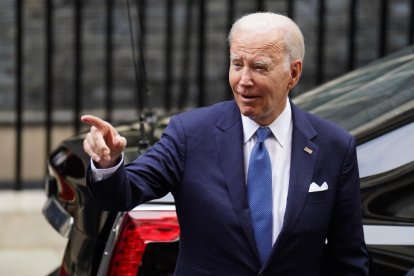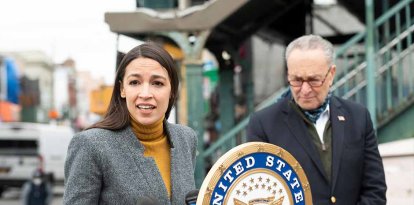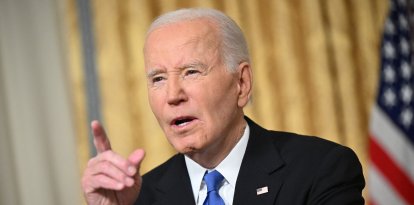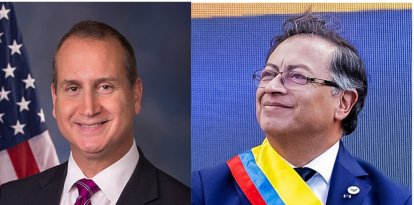Biden administration formally moves to reclassify marijuana as a 'low risk' drug
The president described the initiative as "monumental" and assured that it is "an important step to reverse long-standing inequalities."

(Cordon Press)
Joe Biden began the campaign to improve his perception among younger voters, which has been in free fall for months. To reverse the trend, the president formally began the marijuana reclassification process, with the goal of abandoning the categorization of a restricted substance (Schedule I) to a low-risk substance (Schedule III).
What is this reclassification about? According to the Drug Enforcement Administration (DEA), and based on the Controlled Substances Act (CSA), which establishes the federal policy of the United States on drugs, these are classified as follows: Schedule I, Schedule II, Schedule III, Schedule IV and Schedule V, with I being the most dangerous and V the least dangerous.
“Drugs, substances, and certain chemicals used to make drugs are classified into five (5) distinct categories or schedules depending upon the drug’s acceptable medical use and the drug’s abuse or dependency potential. The abuse rate is a determinate factor in the scheduling of the drug; for example, Schedule I drugs have a high potential for abuse and the potential to create severe psychological and/or physical dependence. As the drug schedule changes-- Schedule II, Schedule III, etc., so does the abuse potential-- Schedule V drugs represent the least potential for abuse,” explains the official DEA site.
With this in mind, the Biden administration seeks to lower marijuana from Schedule I, considered “dangerous,” to Schedule III, where it is understood there is a “moderate to low potential for physical and psychological dependence.”
The initiative was promoted precisely through the DEA, the agency that presented the proposal in the Federal Register, triggering a 60-day public comment period. Once this period has ended, the DEA will submit the proposal to an administrative law judge, who will consider the evidence presented and make a recommendation, which will then be made by the Department of Justice (DOJ) for the final decision.
“This is monumental”
The president celebrated the proposal on his X account, formerly known as Twitter, where he published a campaign-tinged video.
“This is monumental. Today my administration took a major step to reclassify marijuana from a schedule one drug to a schedule three drug. It’s an important move toward reversing long-standing inequities,” Biden said in the publication.
“Today’s announcement builds on the work we’ve already done to pardon a record number of federal offenses for simple possession of marijuana. And it adds to the action we’ve taken to lift barriers to housing, employment, small business loans, and so much more for tens of thousands of Americans,” he added.
“Donald Trump was wrong on marijuana policy”
James Singer, spokesperson for the president’s re-election campaign, spoke with Fox News Digital following Biden’s announcement and criticized Donald Trump for not moving forward on this issue during his term.
“After four years of all talk, all failure from Donald Trump, Joe Biden is keeping his promise on marijuana policy, moving America forward, and making America safer. (...) Donald Trump was wrong on marijuana policy and made America less safe, hurting young people and communities of color. Voters can’t afford the broken promises and dangerous failures of a second Trump term”, he pointed out.
Is Biden desperate?
President Biden’s initiative comes less than six months before the presidential elections, where he will try to win a second term against Donald Trump. However, this seems uphill for now, given that the Republican surpasses him in all the key states: Pennsylvania, Wisconsin, Michigan, Georgia, Arizona and Nevada.
Four years ago, the current president reached the White House by improving on Hillary Clinton’s performance among suburban voters (especially women), men in general and independents, a key group when it comes to recovering the famous’ blue wall.’ In turn, he had strong support among African Americans and young voters, who seem eager to vote differently in 2024.
This was reflected in a survey by the Harvard Institute of Politics (IOP), which found that the degree of support of this demographic group for a Democratic candidate fell to its lowest level in recent years. Indeed, among young people between 18 and 29, Biden would obtain 50% of the votes against Donald Trump’s 37%. Compared to 2020 numbers, this would mean a nine-point drop for the president.
Why are the young voters moving away from Biden?
John Della Volpe, IOP polling director, sees some changes from past election cycles. “Make no mistake, this is a different youth electorate than what we saw in 2020 and 2022, and young voters are motivated by different things,” he explained with the results in hand.
When explaining the reasons that young people distance themselves from the presumptive Democratic nominee, the survey showed the main distancing among young men, a group that lost 20 percentage points compared to 2020.
“Of the concerns about the economy, foreign policy, immigration and the weather, young people across the country are paying attention and are increasingly prepared to make their voices heard at the polls this November,” said OIP Director Setti D. Warren. “Today’s young people have clear concerns about where our country is headed,” he added.
RECOMMENDATION





















